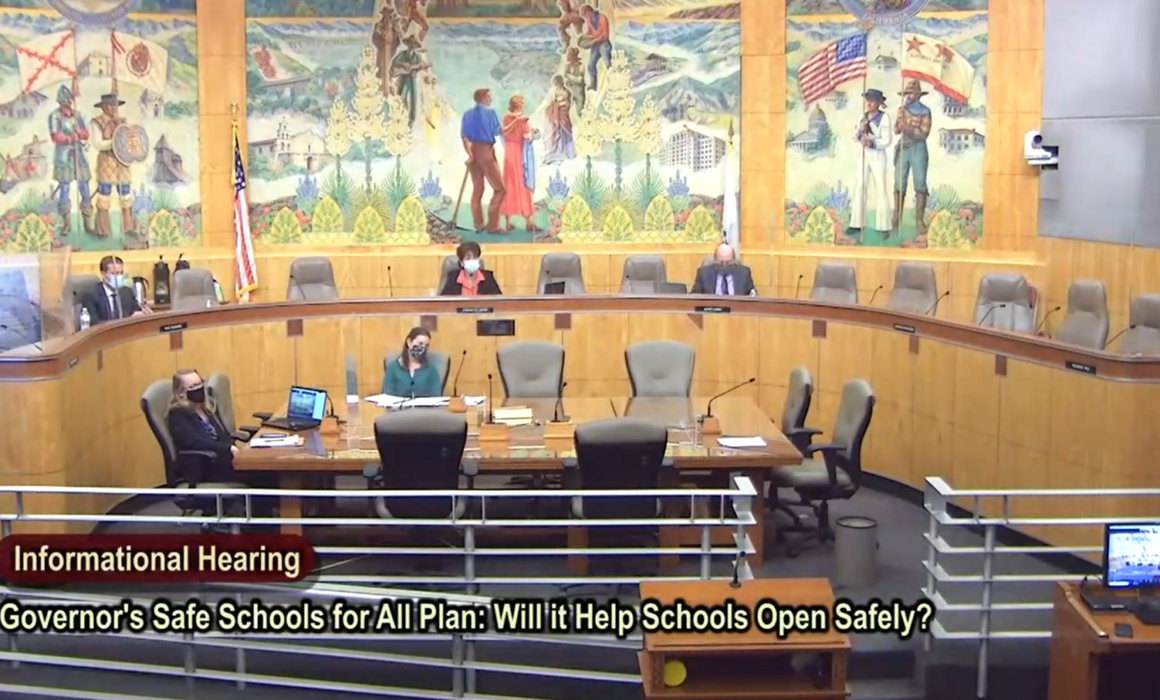
In a joint hearing of the State Senate Education Committee and Senate Budget and Fiscal Review Subcommittee on Education last week, senators expressed concerns about Gov. Gavin Newsom’s Safe Schools for All reopening plan, joining a growing chorus questioning whether parts of the plan are realistic.
Chief among lawmakers’ concerns is the governor’s proposed $2 billion for in-person instruction grants to encourage school districts to begin physically returning to schools as early as mid-February, providing extra funding to schools that meet specific criteria for safe reopening, including virus testing for staff and students. State senators added their voices to educators, administrators and local school board members who say the plan is unrealistic.
“I would like to know there’s actually a school district out there that thinks this plan is workable because I have not found one,” said Senator Connie Leyva (D-Chino).

CTA has led calls since last Spring for uniform COVID-19 testing and tracing guidelines, the necessary Personal Protective Equipment and facility upgrades to ensure the safety of educators and students, and the funding to make these necessary improvements a reality, but the governor’s plan appears to come up short.
“When we look at the plan that the governor has laid out, (it) simply will not help us get to reopening any sooner,” San Diego Unified School Board President Richard Barrera said at the hearing.
Released Dec. 30 of last year, the Safe Schools for All proposal sets a very ambitious goal of returning to some K-2 classrooms by Feb. 15 and more in March. While welcoming much-needed guidance from the state, many in the education community said that six weeks just isn’t enough time to navigate the path back to physical classrooms, nor does it seem scientifically sound—54 of 58 California counties remain in the Purple Tier with uncontrolled COVID spread and intensive care units statewide are straining under the pressure.
“Our educators want to get back in the classroom and on campus as soon as possible but do not want to compromise the safety of our students, teachers, school employees and communities,” CTA Legislative Relations Manager Lori Easterling testified at the hearing.

CTA Legislative Relations Manager Lori Easterling
Easterling underscored that schools should not physically reopen while in the Purple Tier and noted that the governor’s timeline is too compressed for any meaningful planning. CTA shares the concerns of the Legislative Analyst’s Office, which wrote that the “short time frame and significant steps schools would be required to take … is likely unfeasible and could discourage school district participation.”
The superintendents of seven of the largest school districts in the state sent a letter to Newsom warning that the Safe Schools for All plan fails to address the needs of urban school districts, neglects the disproportionate impact COVID is having on low-income communities of color, and reverses a decade-long commitment to equity-based funding.
“While pleased that ‘Safe Schools for All’ prioritizes the reopening of public schools with substantial funding, we cannot ignore that the plan fails to address the needs of the urban school districts that serve nearly a quarter of California students, almost all of whom live below the poverty level,” the superintendents wrote.
Los Angeles Unified’s school board also authorized the school district to sue the state if the proposal becomes a reality.
CTA President E. Toby Boyd said CTA continues to support full distance-learning for all schools in the Purple Tier and reiterated that the health and safety of educators and students should be the guiding principle.
“We share many of the concerns that the superintendents and others have articulated about the structure and implementation of the governor’s proposed reopening plan,” Boyd said.
Another crucial piece missing from the governor’s plan is how to vaccinate educators and other school staff. Easterling told legislators that schools need a coordinated vaccination plan so that staff and students’ parents, guardians and household members who are essential workers or elderly have timely and accessible vaccination opportunities.
“We need to plan for the future. Safely re-opening for in-person instruction is only one part of a larger conversation we need to partner on,” she said. “We need to engage in thoughtful planning for targeted intervention strategies for struggling students, including resources for one-on-one tutoring and to identify learning needs and other support services. We stand ready to have those conversations.”